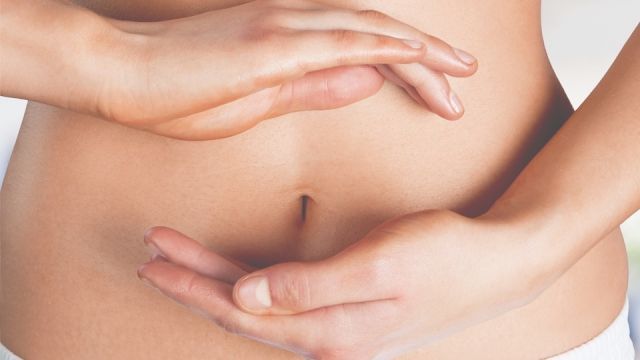
Because our belly button is a long way from our nose and often covered up with clothing, it is unlikely that you would even catch any odors coming from it. However, if you take your finger and do a quick swab, you might be alarmed at what you smell. I know, it sounds gross. Although most belly button odor results from poor hygiene, it could also be more serious and require medical attention.
As you well know, the belly button is the location where your umbilical cord attached you to your mother while you were in her womb. Most people are left with an indentation – although there are plenty of outies resulting from the umbilical cord being cut. The size and depth of belly buttons vary, but most people have a deep enough crevice to get things caught in it from time to time, including:
- Dirt
- Debris, like laundry lint
- Germs
- Bacteria
If you detect a foul odor from your belly button, it could be an infection or a cyst if you also have the following:
- discharge that is white, green, or yellow
- itching
- pain
- redness and swelling
- fever
- a scab around your belly button area
- a lump in your abdomen
When you don’t clean your belly button, bad things can happen
The belly button is home to 67 types of bacteria. Additionally, germs and fungi often get trapped inside the belly button, where germs feed on trapped substances, including oil, dirt, sweat, and dead skin. Germs and bacteria quickly multiply and create quite a stench. Sadly, the deeper your belly button is, the more dirt and germs that build up. The odoriferous cocktail of bacteria, dirt, and sweat persist without good hygiene habits.
Yes, cleaning behind your ears is a good thing, and so is cleaning your belly button. To properly clean your button, put a little soap on a washcloth while you are in the shower and use your index finger to gently clean the inside. A step that many people forget is to meticulously dry your button once out of the shower. Leaving it wet invites more fungi and germs to the party. If you happen to have a belly button piercing, use an antimicrobial wash to keep it clean and dry after cleansing.
An alternative method is to use a cotton swab and dip it in some apple cider vinegar. Apple cider vinegar contains powerful antimicrobial properties and can wipe your button clean of germs and bacteria. Gently clean the inside of your belly button with the swab soaked in apple cider vinegar and pat dry. Make sure to use only organic apple cider vinegar with the “mother.” A word of warning, though, if you have any open cuts in or around your belly button, the apple cider vinegar will sting!
To clean around piercings, soak a cotton ball in sea salt (not table salt) and water for five minutes. Gently dab the skin around the piercing, being careful to get into all of the folds. Use a soft, clean piece of gauze dipped in the saltwater to wipe away any crust that forms. Dry thoroughly.
Unclean belly buttons are an invitation for yeast
Failure to clean your belly button regularly can result in candida growth. Candida is a type of yeast that loves to flourish in warm, dark, and damp locations like your groin, armpits, and belly button. This is especially serious for people with diabetes whose immune system is compromised. A study conducted in 2014 confirmed that people with diabetes are more likely to develop yeast infections if the belly button is not kept clean. Visit your doctor for some anti-fungal treatment as soon as you notice that you have developed a yeast infection. Adopt a good belly button hygiene program to prevent any re-occurrence.
Piercings increase the risk of infection
The skin around a belly button piercing is also prone to infection – any time you create a hole in the skin, it opens up an opportunity for bacteria to enter. If you develop an infection, you may have pus leaking out of your button. You will also have pain, redness, and swelling in the tissue around the piercing and may develop a fever as your body tries to fight the infection. If this occurs, visit your doctor immediately for help. You will most likely need some antibiotics to clear up the infection.
Is it a cyst?
There are a few types of cysts that can occur in and around the belly button. Most common are pillar and epidermoid cysts. Pillar cysts begin near a hair follicle, and epidermoid cysts stop on the top layer of skin. Both of these types of cysts contain cells inside a membrane and produce thick and sludgy keratin. If a cyst bursts, the discharge is thick, yellow, and smells awful. If this occurs, carefully clean your belly button and watch for infection. If an infection develops, see your doctor for care.
A sebaceous cyst begins in the glands that produce sebum, a waxy and oily lipid mixture used for skin protection and lubrication. These cysts fill up with sebum and can develop into a nasty infection. If this occurs, see your doctor.
Use the sniff test
The better your button hygiene, the less likely you are to develop problems. To know when to clean your button, perform regular sniff tests. Most people can get by with a once or twice a week cleaning, while others, who sweat a lot and have deeper buttons, require more frequent cleanings. Bottom line, don’t forget to scrub your belly button when you shower!
-Susan Patterson

